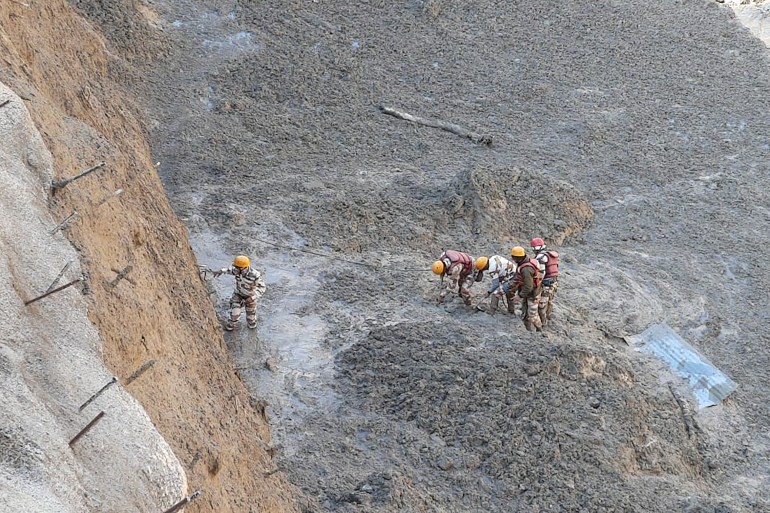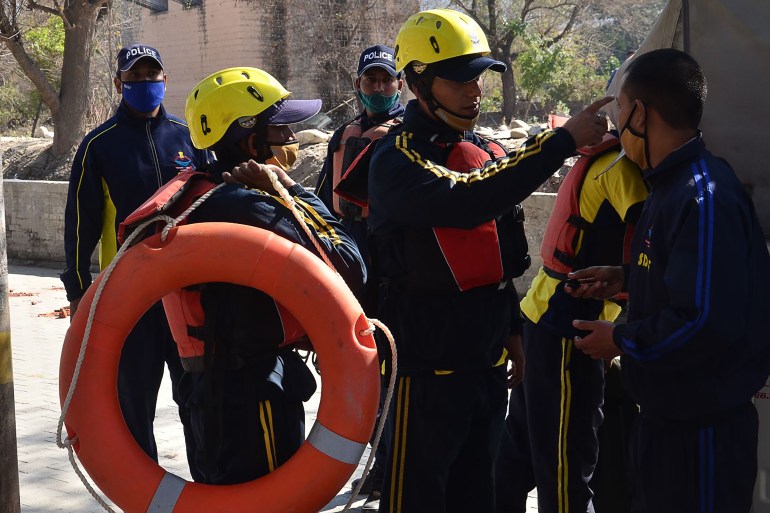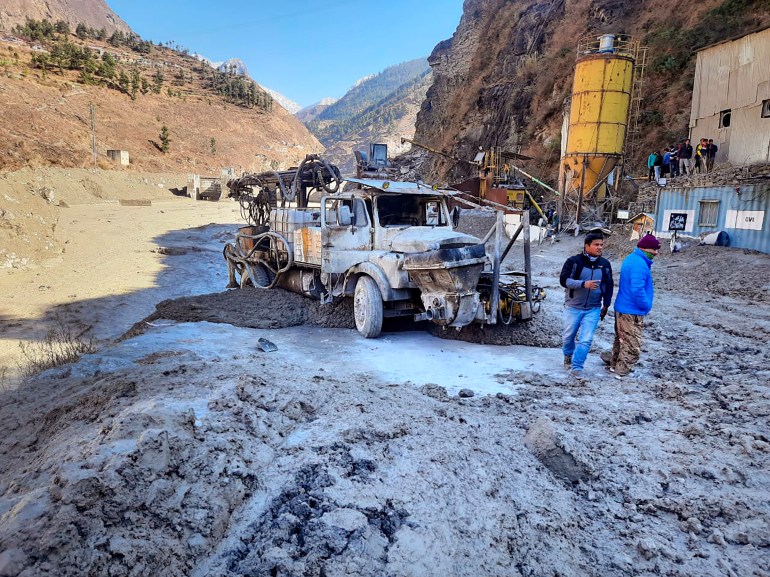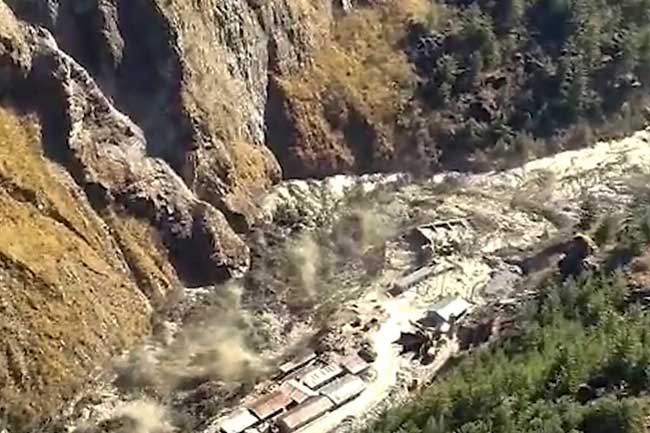Dozens of people are feared dead in India after a Himalayan glacier broke apart and crashed into a hydroelectric dam, with people hurriedly being evacuated amid rising water levels on a nearby river.
“There was a cloud of dust as the water went by. The ground shook like an earthquake,” local inhabitant Om Agarwal told Indian TV.
Speaking to reporters at a press briefing in Dehra Dun, the capital of Uttarakhand state, Chief Minister Trivendra Singh Rawat said “seven bodies have been recovered from the site and rescue operations are going on”.
Om Prakash, Uttarakhand’s chief secretary, said earlier as many as 150 people were feared dead but “the actual number has not been confirmed yet”.
 A rescue operation to clear Tapovan tunnel from debris following floods [Indo Tibetan Border Police handout via AFP]
A rescue operation to clear Tapovan tunnel from debris following floods [Indo Tibetan Border Police handout via AFP]
Most of the missing were workers at two power plants that were battered by the deluge, caused by a huge chunk of glacier that slipped off a mountainside further upstream, said Uttarakhand’s police chief Ashok Kumar.
“There were 50 workers at Rishi Ganga plant and we have no information about them. Some 150 workers were at Tapovan,” he added. “About 20 are trapped inside a tunnel. We are trying to reach the trapped workers.”
With the main road washed away, the tunnel was filled with mud and rocks and paramilitary rescuers had to climb down a hillside on ropes to get access to the entrance.
Hundreds of troops and paramilitaries along with military helicopters and other aircraft have been sent to the region.
Kumar also said authorities had evacuated other dams to contain the water rushing in from the flooded Alakananda river.
A witness said he saw a wall of dust, rocks and water as an avalanche roared down a river valley.
“It came very fast, there was no time to alert anyone,” Sanjay Singh Rana, who lives on the upper reaches of Raini village, told the Reuters news agency by phone. “I felt that even we would be swept away.”
Local authorities reported that districts including Pauri, Tehri, Rudraprayag, Haridwar and Dehradun were put on high alert.
The Times of India newspaper quoted Prime Minister Narendra Modi as saying he was monitoring the situation in Uttarakhand.
“India stands with Uttarakhand and the nation prays for everyone’s safety there. Have been continuously speaking to senior authorities and getting updates on … rescue work and relief operations,” said Modi.
India’s air force was being readied to help with rescue operations, the federal government said, while Home Minister Amit Shah said disaster-response teams were being airlifted in to help with relief and rescue.
Soldiers have already been deployed and military helicopters were doing an aerial reconnaissance of the area.
‘Halt hydroelectric projects’
Uttarakhand in the Himalayas is prone to flash floods and landslides. In June 2013, record rainfall caused devastating floods that killed close to 6,000.
That disaster was dubbed the “Himalayan tsunami” because of the torrents of water unleashed in the mountainous area, which sent mud and rocks crashing down, burying homes, sweeping away buildings, roads and bridges.
 State Disaster Response Fund personnel prepare for deployment in Uttarakhand state [AFP]
State Disaster Response Fund personnel prepare for deployment in Uttarakhand state [AFP]Uma Bharti, India’s former water resources minister and a senior leader of Modi’s party, criticised the construction of a power project in the area.
“When I was a minister I had requested that Himalaya is a very sensitive place, so power projects should not be built on Ganga and its main tributaries,” she said on Twitter, referring to the main river that flows from the mountain.
Environmental experts called for a halt to big hydroelectric projects in the state.
“This disaster again calls for a serious scrutiny of the hydropower dams building spree in this eco-sensitive region,” said Ranjan Panda, a volunteer for the Combat Climate Change Network that works on water, environment and climate change issues.
“The government should no longer ignore warnings from experts and stop building hydropower projects and extensive highway networks in this fragile ecosystem.”
 People inspect the site near the damaged Dhauliganga hydropower project in Reni village, Chamoli distric [AP Photo]
People inspect the site near the damaged Dhauliganga hydropower project in Reni village, Chamoli distric [AP Photo]
Source : AL JAZEERA AND NEWS AGENCIES












